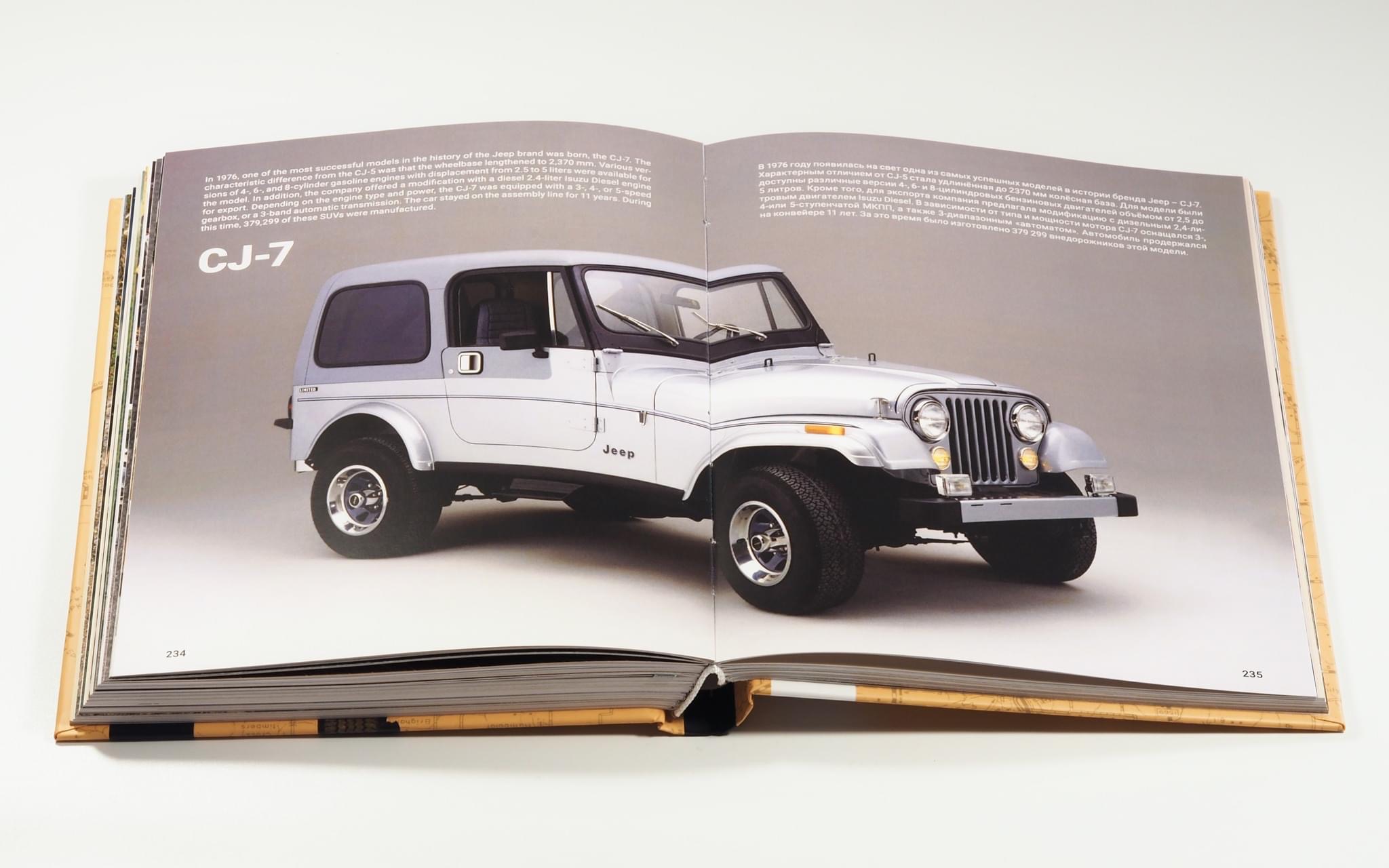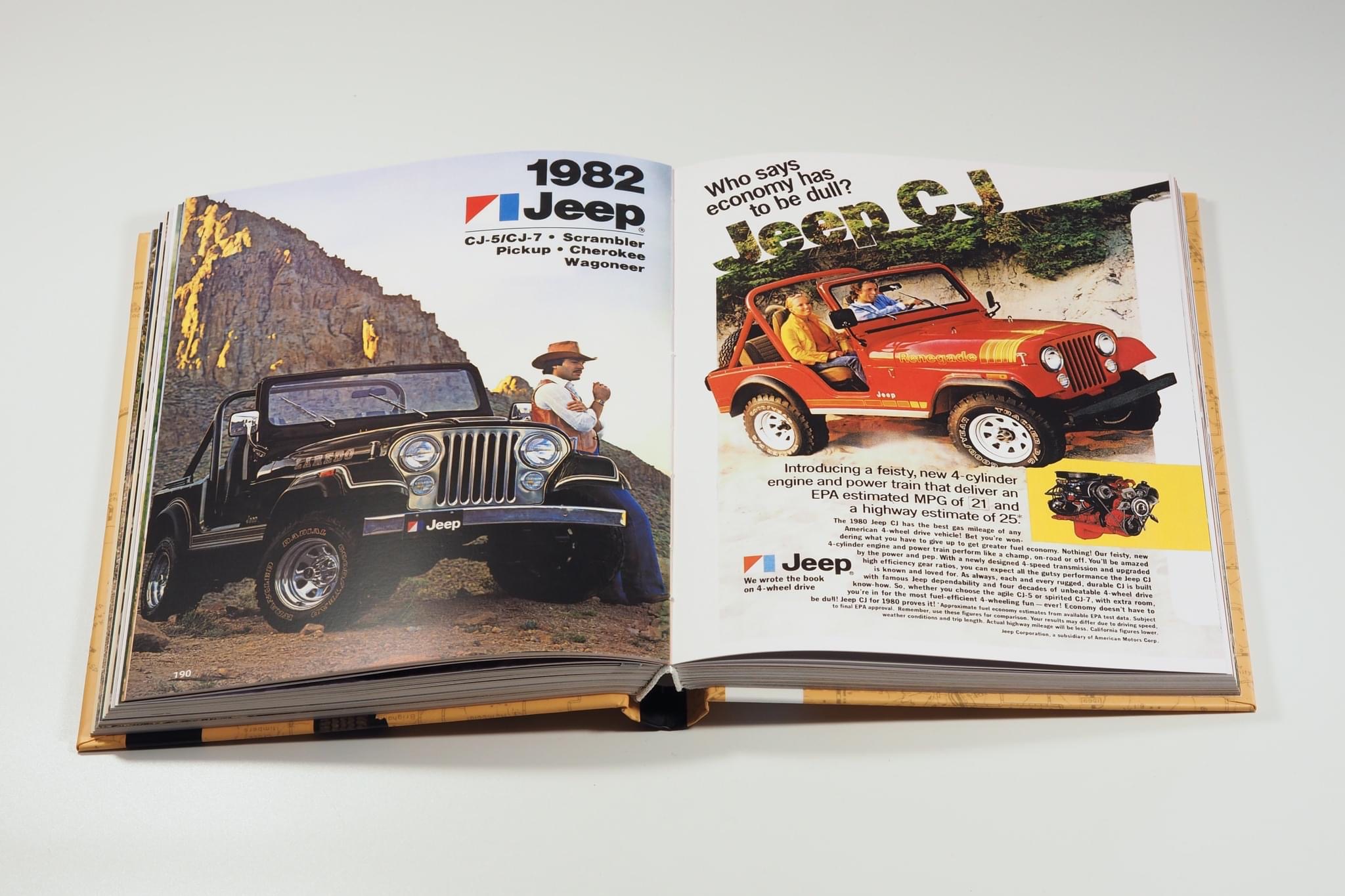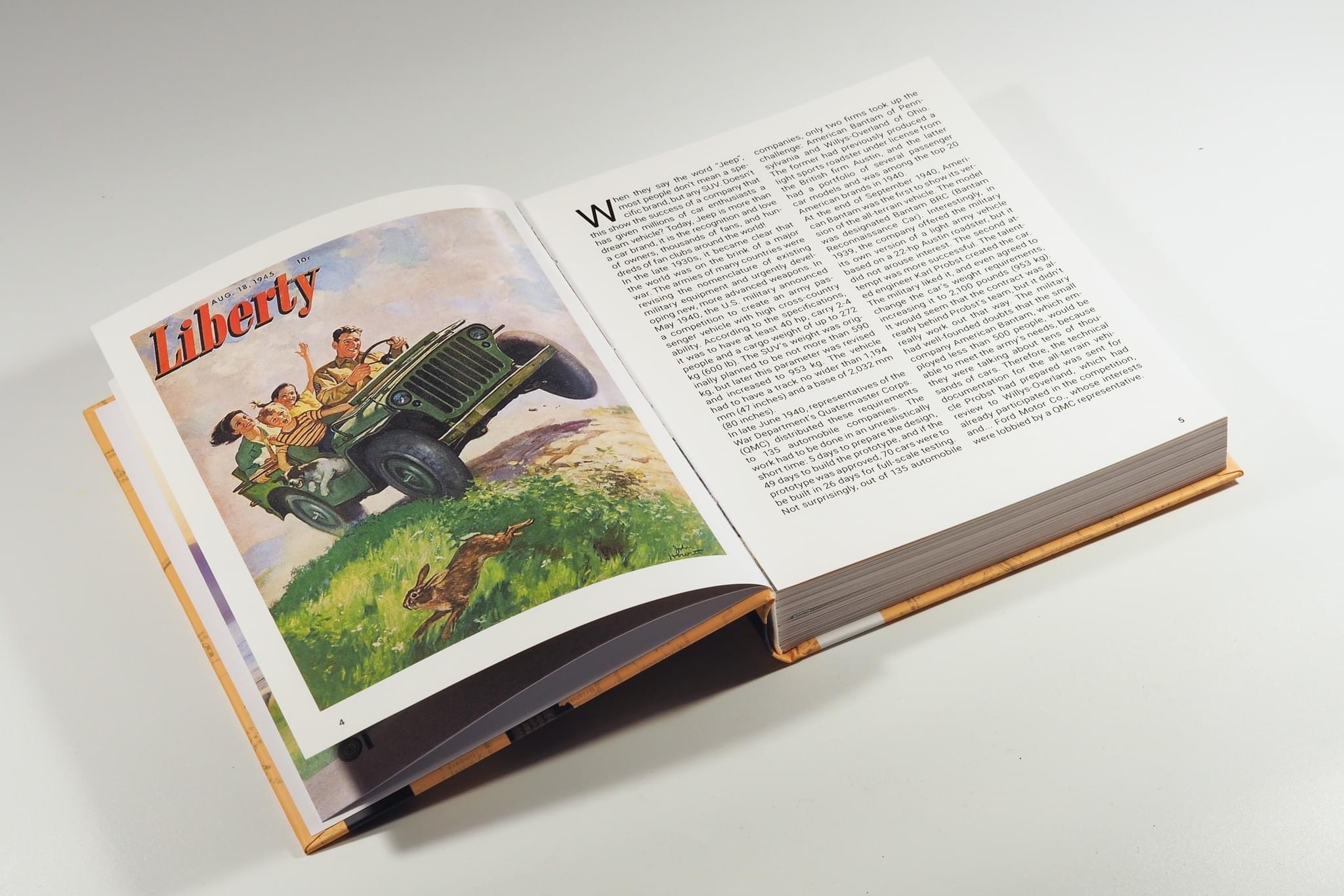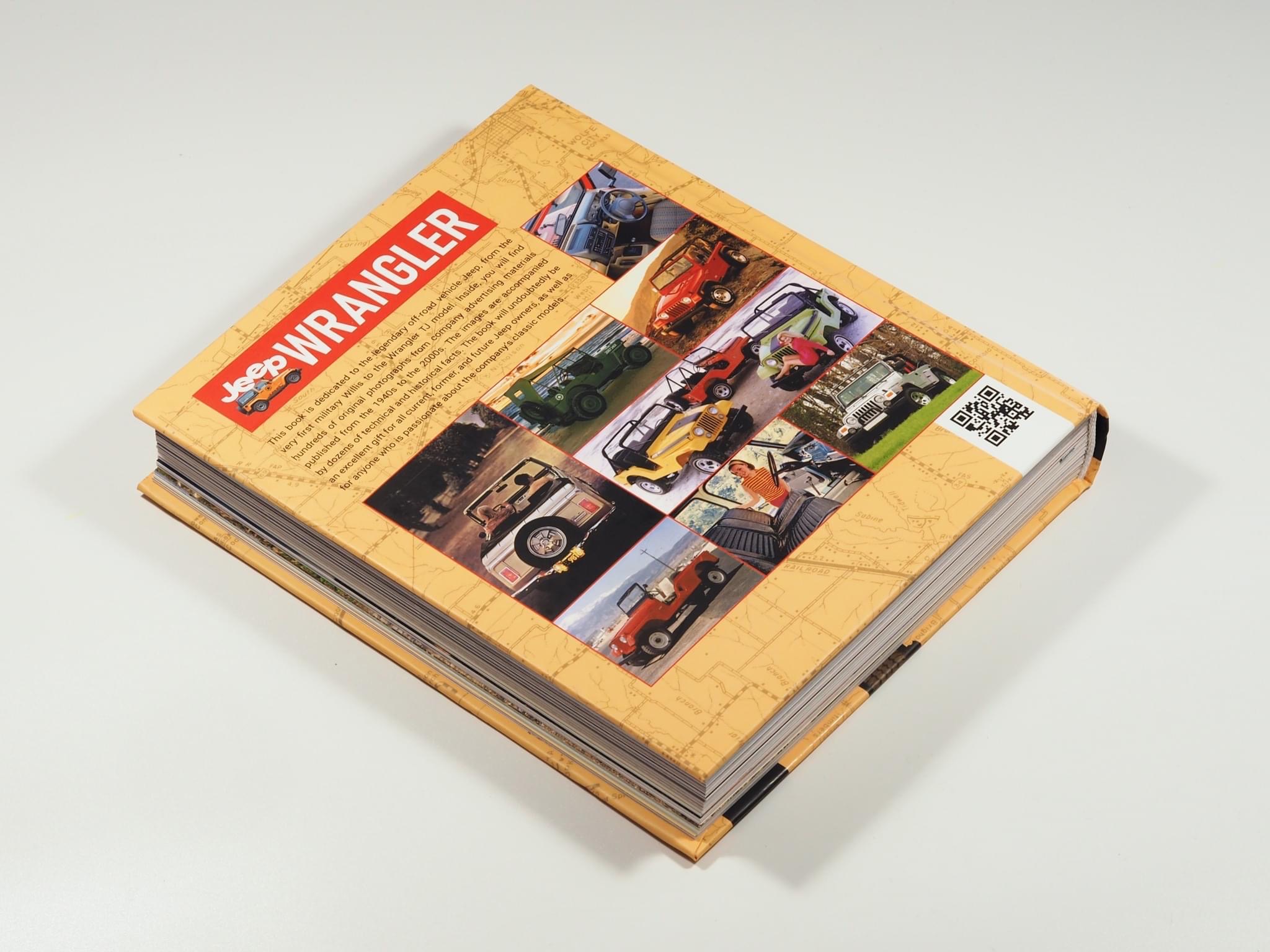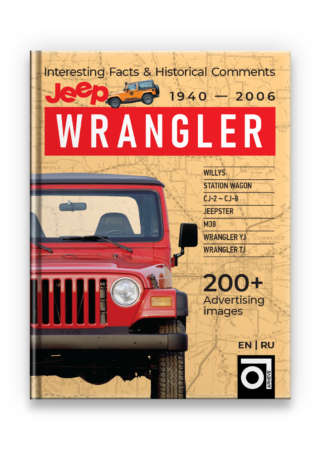Опис
Jeep Wrangler Hardcover book (fragment of the text)
When they say the word “Jeep”, most people don’t mean a specific brand, but any SUV. Doesn’t this show the success of a company that has given millions of car enthusiasts a dream vehicle?
Today, Jeep is more than a car brand, it is the recognition and love of owners, thousands of fans, and hundreds of fan clubs around the world! In the late 1930s, it became clear that the world was on the brink of a major war.
The armies of many countries were revising the nomenclature of existing military equipment and urgently developing new, more advanced weapons. In May 1940, the U.S. military announced a competition to create an army passenger vehicle with high cross-country ability.
According to the specifications, it was to have at least 40 hp, carry 2-4 people and a cargo weight of up to 272 kg (600 lb).
The SUV’s weight was originally planned to be not more than 590 kg, but later this parameter was revised and increased to 953 kg. The vehicle had to have a track no wider than 1,194 mm (47 inches) and a base of 2,032 mm (80 inches).
In late June 1940, representatives of the War Department’s Quatermaster Corps. (QMC) distributed these requirements to 135 automobile companies.
The work had to be done in an unrealistically short time: 5 days to prepare the design, 49 days to build the prototype, and if the prototype was approved, 70 cars were to be built in 26 days for full-scale testing.
Not surprisingly, out of 135 automobile companies, only two firms took up the challenge: American Bantam of Pennsylvania and Willys-Overland of Ohio.
The former had previously produced a light sports roadster under license from the British firm Austin, and the latter had a portfolio of several passenger car models and was among the top 20 American brands in 1940.
At the end of September 1940, American Bantam was the first to show its version of the all-terrain vehicle. The model was designated Bantam BRC (Bantam Reconnaissance Car). Interestingly, in 1939, the company offered the military its own version of a light army vehicle based on a 22-hp Austin roadster, but it did not arouse interest. The second attempt was more successful. The talented engineer Karl Probst created the car. The military liked it, and even agreed to change the car’s weight requirements, increasing it to 2,100 pounds (953 kg). It would seem that the contract was already behind Probst’s team, but it didn’t really work out that way.
The military had well-founded doubts that the small company American Bantam, which employed less than 500 people, would be able to meet the army’s needs, because they were talking about tens of thousands of cars.
Therefore, the technical documentation for the all-terrain vehicle Probst had prepared was sent for review to Willys-Overland, which had already participated in the competition, and… Ford Motor Co., whose interests were lobbied by a QMC representative.
On November 11, Willys-Overland showed its version of the all-terrain vehicle named Quad at Camp Holabird, and a week and a half later, the military met the Ford Pygmy. Not surprisingly, both cars looked a lot like the Bantam, but the Quad had one compelling advantage over the competition, a 60-hp Go Devil engine instead of the 45-hp on the Bantam and the 42-hp Ford.
Read the continuation Jeep Wrangler story in the book.
Other books about history of Jeep:


